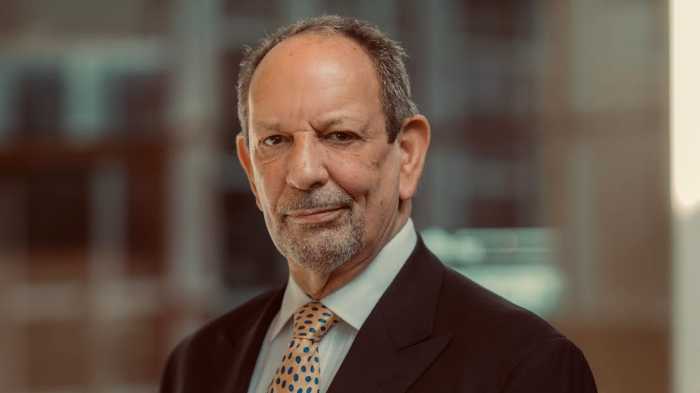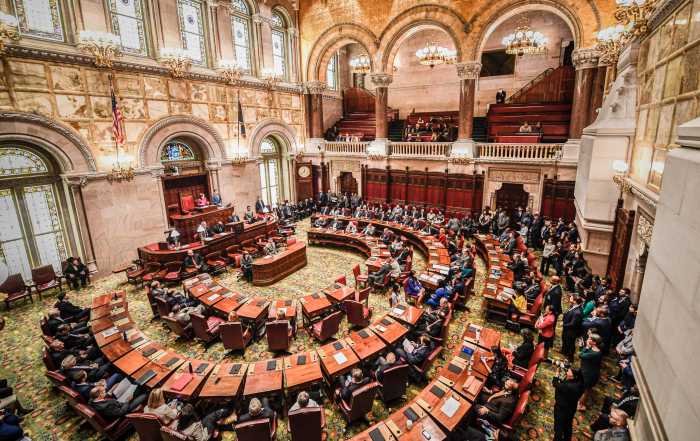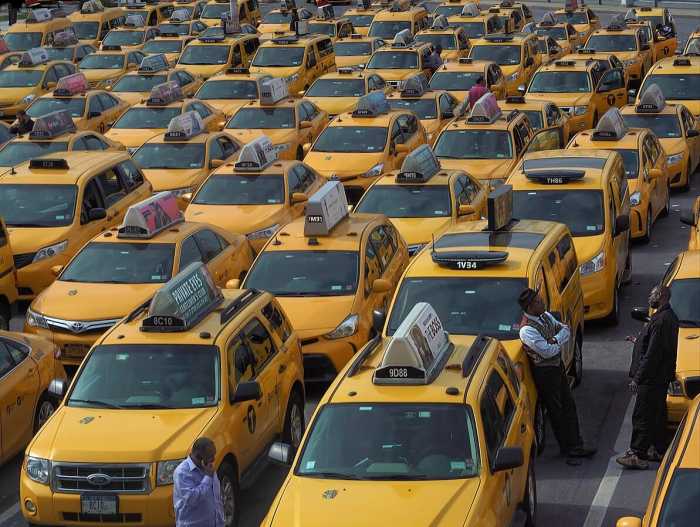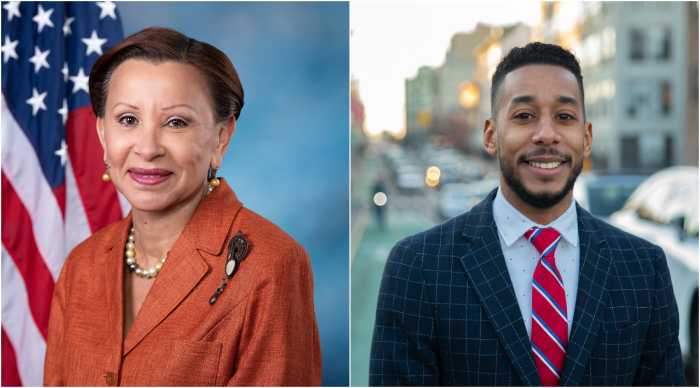If you left town for Presidents Day weekend, maybe you had the experience I had recently on a brief trip out of New York City, driving north on the kind of winding, tree-filled hardly-two-way roads that feel about a thousand miles from the five boroughs and congestion pricing. Maybe you stop at an icy lake for the forever view and think, “Man, they don’t make ’em like this in the 718.”
You then notice a sign with a city agency logo and realize that you’re not that far from NYC after all.
I had ended up in Ulster County at the Ashokan Reservoir, part of the vast and almost unimaginably complex system of 19 reservoirs and three controlled lakes that deliver 1 billion gallons of water a day to NYC by gravity. The operation is so dependable that the incredible announcement made just before New Year’s by Mayor Bill de Blasio was practically routine: NYC again received a waiver from the state Department of Health saying its water was so clean, no filtration was necessary for 90 percent of it. It’s business as usual for some 8.5 million city residents and another million north of NYC.
A deal to keep the water flowing
But the way we drink water is a miraculous feat that relies on a deep connection with and sacrifice from our neighbors to the north, who live around the water funneled to our taps.
It started with bad blood — NYC’s population burgeoning in the early 20th century and throwing around its weight in Albany (how times change) to get the authority to seize land for more reservoirs, moving whole towns, churches, even cemeteries out of the way of the water.
“That obviously triggered a fair amount of hostility,” says Eric Goldstein, New York City environment director at the Natural Resources Defense Council.
The pressure returned in the early 1990s after new federal regulations were passed on water systems that relied on surface water. Since then, New York City has had to either show its water is safe to drink or build a filtration system that could cost more than $10 billion, with at least $100 million in annual operating costs. Facilities of that sort would be “the largest public works project in the history of New York City,” says Adam Bosch of the city Department of Environmental Protection.
Instead, NYC decided to make a deal with the good people upstate.
To avoid onerous filtration, Bosch notes, the city had to make sure the watershed area that feeds the reservoirs was protected. It worked with farmers to, for instance, build infrastructure to keep cows and hogs out of streams, providing them with water elsewhere.
Preventive programs like this have cost about $2 billion over the past 25 years plus a $1 billion commitment over the next 10 years — far less than the price of filtering.
The “poster child” for this effort is Cannonsville Reservoir in Delaware County, says Bosch. Its water used to turn neon green in the summer due to subpar wastewater treatment plants and dairy farms in the area, requiring the city to shut it for the season. In 20 years of working with farmers and waste plants, Cannonsville now has some of the cleanest water in the system.
Keeping the water safe
But protecting the system takes continued work. That includes protecting it from terror attacks, a big emphasis: Bosch will only say there are many levels of security, including a monitored tank of fish swimming in a flow of NYC water 24 hours a day. If they go bellyup, we’ll know there’s a problem.
Some two million tests are done throughout NYC’s water system each year, plus treatment with chlorine and the like, to safeguard the unfiltered water.
Beyond that, the filtration waiver includes a number of actions NYC must take such as preserving sensitive lands and making more investments on watershed farms.
Water watchers like Goldstein also warn about the impacts of climate change. The DEP has been studying the issue and its fallout, including the fact that warmer surface water temperatures could allow more biological activity in reservoirs.
Future changes likely mean a continued crucial cooperation with our upstate neighbors, who have been encouraged into “a diminishing hostility” thanks to the partnerships and infusions of cash from NYC, says Goldstein.
Marbletown, west of the Hudson in Ulster County, is one of those areas that lives with the thirsty needs of NYC. Supervisor Rich Parete says that while only a sliver of the area is in the watershed, when the city has released water from the Ashokan Reservoir it can affect the downstream creek through Parete’s jurisdiction — potentially eroding land, for example.
But Parete says that hasn’t happened recently, and that the relationship with the city is much better than it has been in years past. He’s only been supervisor a month and says he’s already talked to the city’s DEP multiple times. “The communication is excellent,” he says.
Thankfully, the water is, too.







































